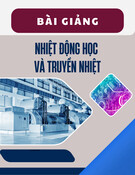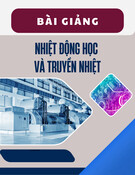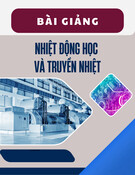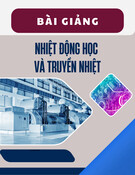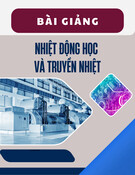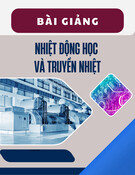
REGULAR ARTICLE
SESAME project: advancements in liquid metal thermal
hydraulics experiments and simulations
Mariano Tarantino
1,*
, Ferry Roelofs
2
, Afaque Shams
2
, Abdalla Batta
3
, Vincent Moreau
4
, Ivan Di Piazza
5
,
Antoine Gershenfeld
6
, and Philippe Planquart
7
1
ENEA FSN-ING, R.C. Brasimone, Camugnano (Bo) 40033, Italy
2
NRG, Westerduinweg 3, 1755 LE Petten, Netherlands
3
KIT, Kaiserstr. 12, 76131 Karlsruhe, Germany
4
CRS4, Science and Technology Park Polaris Piscina Manna, 09050 Pula, Italy
5
ENEA FSN-ING, R.C. Brasimone, Camugnano (Bo) 40033, Italy
6
Commissariat à l’Energie Atomique et aux Energies Alternatives (CEA), Saclay, Gif-sur-Yvette cedex, France
7
Von Karman Institute for Fluid Dynamics, Waterloosesteenweg 72, Sint-Genesius-Rode 1640, Belgium
Received: 1 July 2019 / Accepted: 15 July 2019
Abstract. Liquid metal cooled reactors are envisaged to play an important role in the future of nuclear energy
production because of their possibility to use natural resources efficiently and to reduce the volume and lifetime
of nuclear waste. Sodium and Liquid lead (-alloys) are considered the short and long term solution respectively,
as coolant in GEN-IV reactor. Thermal-hydraulics of liquid metals plays a key role in the design and safety
assessments of these reactors. Therefore, this is the main topic of a large European collaborative program (the
Horizon 2020 SESAME) sponsored by the European Commission. This paper will present the progress in the
project with respect to liquid metal cooled reactor thermal-hydraulics (liquid metal heat transfer, fuel assembly
thermal-hydraulics, pool thermal-hydraulics, and system thermal-hydraulics). New reference data, both
experimental and high-fidelity numerical data is being generated. And finally, when considering the system
scale, the purpose is to validate and improve system thermal-hydraulics models and codes, but also to further
develop and validate multi-scale approaches under development.
1 Introduction
Within the framework of the Strategic Energy Technology
Plan (SET-Plan), civil nuclear power is envisaged to
deliver safe, sustainable, competitive and essentially
carbon-free energy to Europe’s citizens.
ESNII, the European Sustainable Nuclear Industry
Initiative, is an European framework of collaboration, led
by the industry, but involving also research bodies and
nuclear stakeholders, aiming at promoting the develop-
ment of Gen-IV Fast Neutron Reactor technologies,
together with the supporting research infrastructures, fuel
facilities and R&D work [1].
Under the ESNII umbrella, four projects are boosted in
Europe, as depicted in Figure 1.
ASTRID is the SFR industrial prototype, and it
represents the shorter-term option for fast nuclear reactor
in Europe being based on the proven sodium technology [2].
ALFRED is the European demonstrator of Lead cooled
Fast Reactor (LFR) technology, to be constructed in
Romania [3]. MYRRHA, under construction in Mol
(Belgium) is a multipurpose fast neutron spectrum
irradiation facility proposed to operate as a large research
infrastructure [4]. MYRRHA will also demonstrate the
technological feasibility of the Accelerator Driven System
(ADS) operated for waste transmutation.
The last is SEALER, a small lead cooled reactor, which
is currently under development by the Swedish company
LeadCold. It is designed to provide reliable and safe
production of power/electricity for remote sites [5]. Except
for the SEALER concept, the reactors under consideration
have been described in IAEA [6] and the IAEA booklet on
the status of fast reactor designs and concepts [7].
For the technological development of the above
mentioned projects, many efforts are devoted to the
development of liquid metal technologies (lead, lead-alloys,
sodium), and as consequence thermal-hydraulics of liquid
metal is considered one of the key scientific subjects in the
design and safety analysis. Many efforts have been spent in
Europe for addressing thermal-hydraulic issues as reported
in [8–16]. To address thermal-hydraulic issues, analytical
and empirical correlations are proposed and verified,
*e-mail: Mariano.tarantino@enea.it
EPJ Nuclear Sci. Technol. 6, 18 (2020)
©M. Tarantino et al., published by EDP Sciences, 2020
https://doi.org/10.1051/epjn/2019046
Nuclear
Sciences
& Technologies
Available online at:
https://www.epj-n.org
This is an Open Access article distributed under the terms of the Creative Commons Attribution License (https://creativecommons.org/licenses/by/4.0),
which permits unrestricted use, distribution, and reproduction in any medium, provided the original work is properly cited.

system thermal hydraulics (STH) and sub-channels codes
implemented and validated. In the last fifteen years,
Computational Fluid Dynamics (CFD) techniques are
playing a relevant role in the design and safety assessment
of liquid metal cooled fast reactors.
To advance progress in this field, the collaborative
Horizon 2020 thermal hydraulic Simulations and Experi-
ments for the Safety Assessment of MEtal cooled reactors
(SESAME) project, sponsored by the European Commis-
sion, was initialized in 2015 with duration of 4 years. This
project ended in 2019 [17].
One of the main deliverables of this international
project was a textbook titled ‘Thermal Hydraulics Aspects
of Liquid Metal Cooled Nuclear Reactors’,[18].
23 European institutes and US partners were involved
in the project (see Fig. 1) with about 100 researchers and
916 PMs of work (Fig. 2).
2 Liquid metal heat transfer
One of the most relevant task in the safety analysis of liquid
metal nuclear reactors consist of in the accurate prediction
of turbulent heat transfer under forced, mixed and natural
convection regimes.
Presently, the most adopted models to simulate
turbulent heat transfer are based on the Reynolds analogy.
While this approach is applicable successfully for forced
convective flows with a Prandtl number of order of unity, in
the case of nuclear systems cooled with liquid metal, for
which Prandtl number is higher than the unity, this
approach is not enough accurate for the aim.
This is especially true for the simulation of large pool
reactors where all flow regimes may occur simultaneously.
As consequence, an improved numerical modelling for the
turbulent heat transfer in liquid metal is required,
applicable with any flow regimes. Improvements on
modelling and simulation have been proposed and tested
on different simple test cases [19]. An update of the
ongoing model evaluation and development is reported in
[20].
The extension of the validation base for flow separa-
tion, jets, mixed convection and a rod bundle represent
one of the main topics of the SESAME project. An
overview of experimental and numerical activities per-
formed, is presented in Figure 3.In[21], new reference
data from open literature on a backward facing step was
used. It shows encouraging results for the AHFM-NRG
model for turbulent heat transport coupled to an isotropic
linear model for momentum. The same authors explain in
[22] that they have extended their turbulent heat flux
model to the use of an anisotropic non-linear model for
momentum. They tested it for different scenarios like the
flow between two flat plates, impinging jet case from the
project and for a bare rod bundle case for which reference
data was available from other projects and open
literature. In [23], an assessment of a variety of promising
models is made with respect to the impinging jet case also
used in [22]. Apart from the Reynolds analogy, three
different advanced models have been employed: an
implicit and explicit AHFM model and the so-called
Kays correlation. Limitations of the Reynolds analogy are
clearly demonstrated while, all advanced models show
reasonable behaviour for this forced convection case.
However, they are all based on an isotropic linear model
for momentum, and it is concluded that expansion to an
anisotropic non-linear model (as in [22]) could clearly
bring added value.
Finally, [20] summarizes the latest developments with
respect to advanced turbulent heat flux model develop-
ments. In the frame of the SESAME project, new
reference data are assessed for a variety of advanced
turbulent heat flux models, i.e. the second order TMBF-
eq-ATHFM model, an implicit AHFM model and the
AHFM-NRG. Three different sets of reference data are
assessed covering the various flow regimes. For the
natural convection flow regime a Rayleigh-Bernard
Convection case has been considered from literature,
for the mixed convection flow regime, new data from the
SESAME project has been considered and for the forced
convection flow regime, again the impinging jet case has
been considered. Once again, the AHFM-NRG showed
good results in all flow regimes. The implicit AHFM
model showed good results in the forced convection
Fig. 1. European liquid metal cooled reactor demonstration
projects.
Fig. 2. SESAME partners.
2 M. Tarantino et al.: EPJ Nuclear Sci. Technol. 6, 18 (2020)

regime, while it became clear that the promising second
order TMBF-eq-ATHFM will need further calibration
especially for applications involving non-negligible
buoyancy effects, before definite conclusions on the
performance of this model can be drawn. An extensive
discussion on this work, can be found in [24].
3 Core thermal hydraulics
The core thermal hydraulics work package, within the
SESAME project was focused on the development and
validation of numerical models for the thermal hydraulic
simulation of liquid metals fast reactor cores. The
developed models include sub-channel codes, reduced
resolution CFD, coarse-grid-CFD and CFD models. New
reference data were generated from the considered experi-
ments, high fidelity numerical models and DNS. Experi-
mental data is generated for wire-wrapped bundles, a
bundle with spacers, the effect of blockage, and inter
wrapper flow. All intended data was prepared and applied
in the model development or in the validation of the used
model.
In the SESAME project, a 7-pin rod bundle experiment
was performed adopting water as coolant, allowing to
implement a validation database for the flow field.
Moroever, quasi-DNS simulation data was generated for
a rod bundle with an infinite number of pins and LES data
was generated for a 61-pin bundle. In [25], the work on
validating RANS CFD methods for wire-wrapped fuel
assemblies is summarized. It is concluded that validation
efforts up to now indicate that an accuracy within 12.5%
for engineering RANS models should be feasible for all
bundle sizes and all parameters checked. It is also noted
that this value has to be considered as preliminary.
Important steps in the validation strategy are missing, i.e.
validation for large scale bundles both for the hydraulic
field as well as for the thermal field. Furthermore, it is
important to realize that all of the applied thermal
validation simulations have used the standard Reynolds
analogy with a constant turbulent Prandtl number
approach and as such there is room for improvement.
Concerning grid spaced fuel assemblies, new data to
support the ALFRED reactor fuel assembly design has
been produced by performing experiments in a liquid metal
rod bundle with and without blockages (Fig. 4). These
experiments have been described in detail by [26].
Simulations have been performed for these experiments
also. The simulations for the unblocked bundle show a good
comparison with the experimental data with differences
less than 10%. The simulations for the blocked bundle also
show a reasonable comparison (on average in the order of
15%), except for the prediction of the wake region behind
the blockage [27]. Simulations were performed using a
reduced resolution RANS approach to allow scaling up to a
complete ALFRED fuel assembly at reasonable computa-
tional costs. The errors involved in using a reduced
resolution technique were a priori determined by compari-
son to RANS results and by comparing to experiments.
The interaction of turbulent flow with the fuel pins
(flow induced vibrations in a fuel assembly) was experi-
mentally investigated in a seven pin bare rod bundle using
water as coolant (SEEDS-1 experimental facility).
Obtained data were used to support the development
and validation of numerical approaches. Simulations were
Fig. 3. Overview of reference data referred to liquid metal heat transfer.
M. Tarantino et al.: EPJ Nuclear Sci. Technol. 6, 18 (2020) 3

based on a URANS approach with an SST k-vturbulence
model and strongly coupled algorithms to account for the
fluid-structure interaction. The frequency of the flow
pulsations was reasonably well predicted. However, the
results of the Fluid Structure Interaction (FSI) calculations
deviated from the experiments in that they under-
predicted the amplitude of the flow-induced vibrations
and in that they over-predicted the respective frequency.
Several possible reasons for the mismatch were identified,
but will need future investigations to draw conclusion. In
particular, the fixation and/or material properties of the
transparent material, the stiffness of the rods, the modeling
of the water filling of the rods, and dimensional tolerances
of the components of the experimental set-up might play a
role [28].
4 Pool thermal hydraulics
SESAME work package number three, deals with HLM
flows in a pool configuration at different scales (Fig. 5).
Thermal stratification and mixing phenomena were
Fig. 5. Overview of experimental and numerical pool thermal hydraulic activities.
Fig. 4. Clad temperature distribution (a) and cross-section averaged pressure distribution along the streamwise direction (b):
unperturbed case (ALFRED fuel assembly).
4 M. Tarantino et al.: EPJ Nuclear Sci. Technol. 6, 18 (2020)

investigated in small scale apparatus like the TALL-3D
facility [29] (Thermal-hydraulic Lead-bismuth Loop with
3D flow test section) developed at KTH (Royal Institute of
Technology, Stockholm, Sweden). Solidification/remelting
in buoyancy driven lead flow was performed in the
SESAME-stand experimental facility by CVR (Research
Centre Rez, Czech Republic). Large scale experiments were
performed at ENEA Brasimone R.C. in the CIRCE
(Circolazione Eutettico) refurbished with the Integral
Circulation Experiment (ICE) test section and thermal
stratification and flow patterns were experimentally
investigated.
Experimental data were used to validate numerical
approaches developed in parallel for these facilities
using CFD software. These comparisons, reported in
[30,31] show reasonable performance of the CFD
models. In [30] validation of CFD was performed for
the TALL facility including an elaborate sensitivity
analysis. This analysis indicates that the boundary
conditions (e.g. LBE mass flow rate, inlet temperature,
heater power) followed by the turbulent Prandtl
number and material properties (e.g. density and heat
capacity of LBE) constitute the major sources of
modelling uncertainty. Once the radiative heat transfer
was taken into consideration, the CFD simulations
reported in [32] could reproduce with good accuracy the
solidification/remelting experiments performed in the
SESAME-Stand facility. The CFD models of CIRCE-
ICEreportedin[31] reproduce the general flow and
temperature patterns of the facility operating under
nominal and transient conditions reasonably well. It
was found that prediction of the stratification in the
CIRCE-ICE pool is sensitive to the modelling of the
conjugate heat transfer from the inner loop to the pool.
Overall, modelling results of CIRCE-ICE served as
valuable feedback to the experimentalists, resulting in
changes made to the facility and a better data
acquisition in follow-up experiments.
Finally, full CFD approaches are applied to the full
scale ALFRED design [3], profiting from the validation
efforts on the TALL and CIRCE-ICE facilities. These
simulations for a full scale reactor provide designers a
priori detailed insight in 3 dimensions concerning the
behaviour of flow and heat transport in their design
(Fig. 6).
4.1 System thermal hydraulics
In the frame of safety assessment and design of nuclear
reactors, the use of system thermal-hydraulics codes is
widely adopted to simulate the transient behaviour of the
whole systems, i.e. primary and secondary system,
including the balance of plant.
Such STH-codes have been developed mainly for PWRs
and BWRs (e.g. RELAP5, CATHARE, etc..), and
validated using integral test facility design specificor
experimental data coming from the operation of nuclear
reactors and prototypes [33].
For the application to liquid metal fast reactor, these
STH-codes need to be updated with state-of-the-art
algorithms, models and correlations, and their validation
extended with suitable experimental database aiming at
confirming their applicability for safety analysis.
Moreover, in the case of multi-scale approaches, in
which STH-codes are coupled with CFD codes to catch
relevant 3D phenomena in the system simulation, the
validation process has to be further extended considering
the code coupling. The multi-scale approach is going to be
developed both for light water [34] and liquid metal cooled
reactors [35].
For liquid metal systems very few data set are available
for the validation process, as for example the data coming
from the experiments performed on TALL-3D loop.
Apart from this small scale basic experiment, validation
of such multi-scale approaches has also been performed by
comparing to reactor scale data from the EBR-II [36] and
Phénix natural circulation tests [37]. As these data relate to
real operating reactor, the possibilities for instrumentation
were limited.
One of the main goal of SESAME project was to extend
the validation base of STH-codes or multi-scale
approaches, providing suitable experiments for the aim
(see Fig. 7).
The first level of validation data was provided by
experiments performed by TALL-3D (KTH, Sweden) and
NACIE-UP (ENEA, Italy) loop facilities. For scaled-up
multi-scale approach, experiments on CIRCE-HERO
(ENEA, Italy) have been implemented and run in the
frame of the project [38].
A further added value coming from the SESAME
Project is the availability of experimental data (i.e.
dissymmetric tests) coming from the Phénix reactor end
of life tests. This data will support the validation process of
multi-scale codes to a much larger extent than the natural
circulation test data which were previously used [37].
A large amount of experimental tests was performed in
the TALL-3D facility [39]. Specific tests were selected for
blind and open benchmark with system codes or coupled
multi-scale numerical approaches. The open benchmarked
results from, all available simulations compared well with
the experiment. The blind benchmark demonstrated a
spread of the results. In fact, all possible types of
transients were obtained in the simulations. An uncer-
tainty propagation analysis was performed which provid-
ed a lot of insight. The results suggest that the current
models are not capable of capturing the experimental data
(even taking into account experimental uncertainties).
Fig. 6. ALFRED according to LEADER project. Geometry (a),
velocity field (b) and temperature field (c).
M. Tarantino et al.: EPJ Nuclear Sci. Technol. 6, 18 (2020) 5

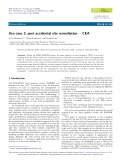
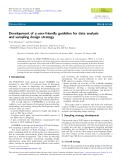
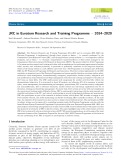
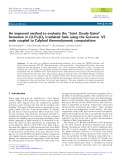
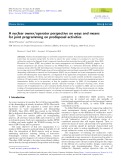
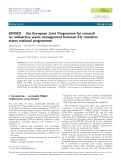
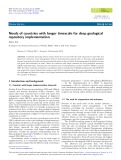

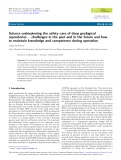
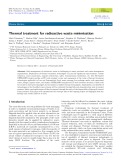
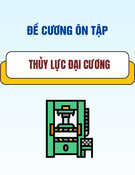





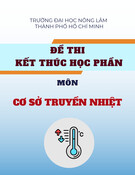
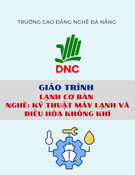
![Ngân hàng trắc nghiệm Kỹ thuật lạnh ứng dụng: Đề cương [chuẩn nhất]](https://cdn.tailieu.vn/images/document/thumbnail/2025/20251007/kimphuong1001/135x160/25391759827353.jpg)
